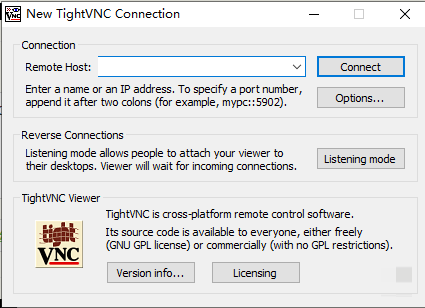
Now, any number of users can get unique desktops by connecting to port 5900. To get this running, first set up XDMCP and make sure the display manager is running.ĮxecStart=-/usr/bin/Xvnc -inetd -query localhost -geometry 1920x1080 -once -SecurityTypes=None The downside is that users cannot leave a session running on the server and reconnect to it later. This setup uses the display manager to authenticate users and login, so there is no need for VNC passwords. One can use systemd socket activation in combination with XDMCP to automatically spawn VNC servers for each user who attempts to login, so there is no need to set up one server/port per user. Running Xvnc with XDMCP for on demand sessions

The ExecStartPre line waits for Xorg to be started by $ -SecurityTypes=TLSPlain. ~/.config/systemd/user/rvice ĮxecStartPre=/bin/sh -c 'while ! pgrep -U "$USER" Xorg do sleep 2 done'ĮxecStart=/usr/bin/x0vncserver -rfbauth %h/.vnc/passwd In order to have a VNC Server running x0vncserver, which is the easiest way for most users to quickly have remote access to the current desktop, create a systemd unit as follows replacing the user and the options with the desired ones: etc/systemd/system/rvice ĭescription=Remote desktop service (VNC) for :0 displayĮnvironment=XAUTHORITY=/var/run/lightdm/root/:0ĮxecStart=x0vncserver -display :0 -rfbauth ~/.vnc/passwdĪs this is a system unit, -rfbauth ~/.vnc/passwd refers to /root/.vnc/passwd LightDM is used for the example below, but it should be possible to adapt it to other display managers by modifying the XAUTHORITY variable. The service will be relaunched automatically every time an user logs off of their session. This option will allow the users to access the current display, including the login screen provided by your display manager. See: Issue #529.Ī simple way to start x0vncserver is adding a line in one of the xprofile files such as: x0vncserver does not currently support clipboard sharing between the client and the server (even with the help of autocutsel).x11vnc is an alternative VNC server which can also provide direct control of the current X session.desktop files within /usr/share/xsessions/. One can see which desktop environments are available on the system by seeing their corresponding. Create ~/.vnc/config and at a minimum, define the type of session desired with a line like session=foo where foo corresponds to whichever desktop environment is to run.
Tigervnc server windows free#
If another parallel server is needed, a second instance can then run on the next highest, free port, i.e 5902 (5900+2).

The number in the file corresponds to a TCP port. Each user defined in this file will have a corresponding port on which its session will run.

Tigervnc server windows password#
Create a password using vncpasswd which will store the hashed password in ~/.vnc/passwd.Users are encouraged to read vncserver(8) for the complete list of configuration options. Note: Linux systems can have as many VNC servers as memory allows, all of which will be running in parallel to each other.įor a quick start, see the steps below.


 0 kommentar(er)
0 kommentar(er)
